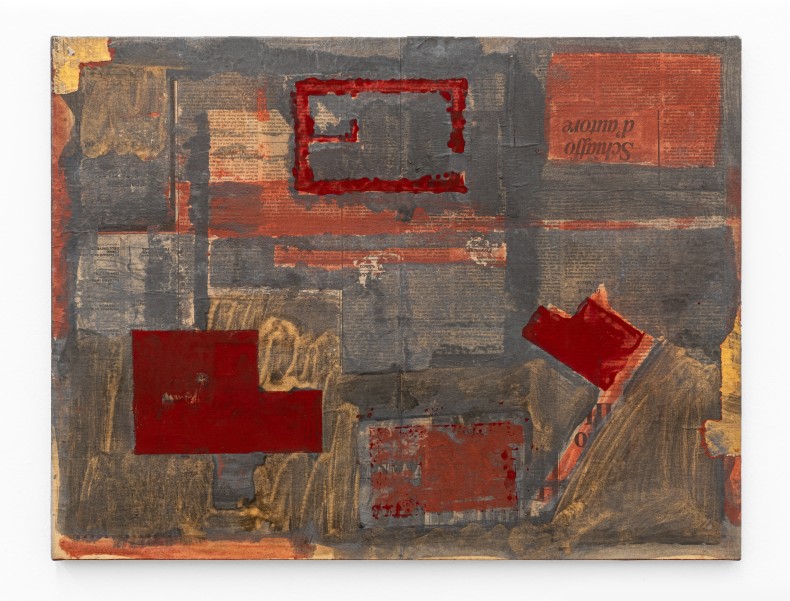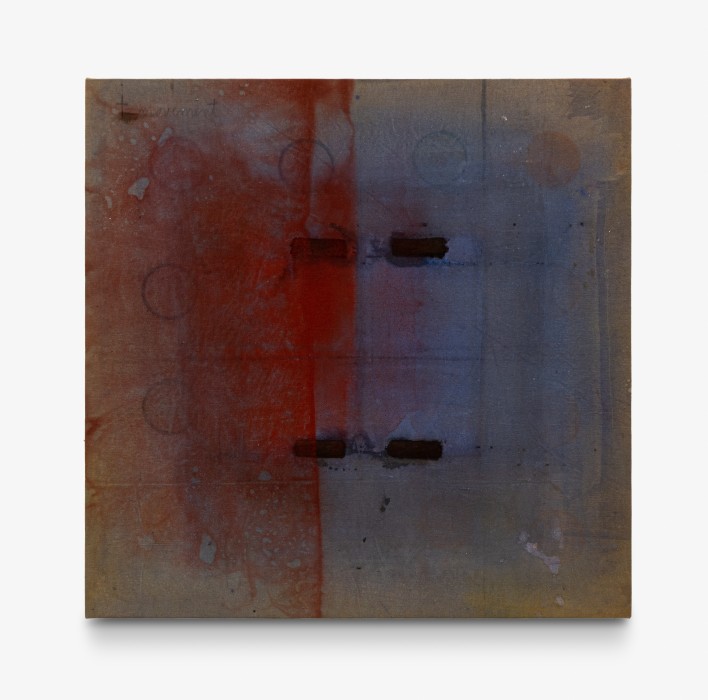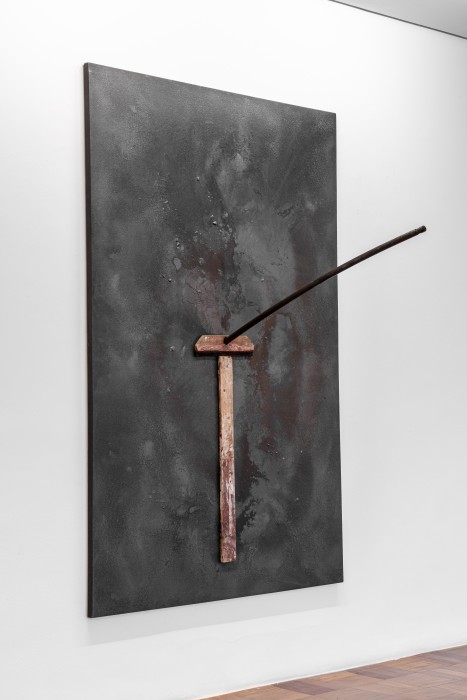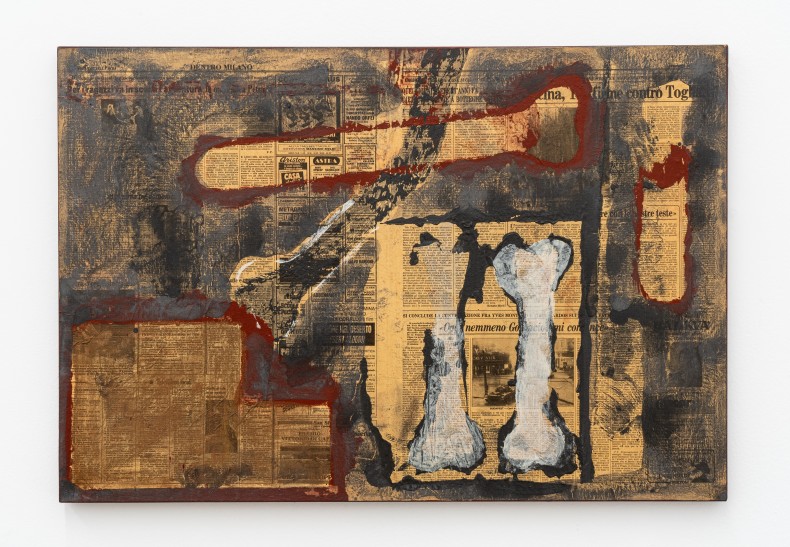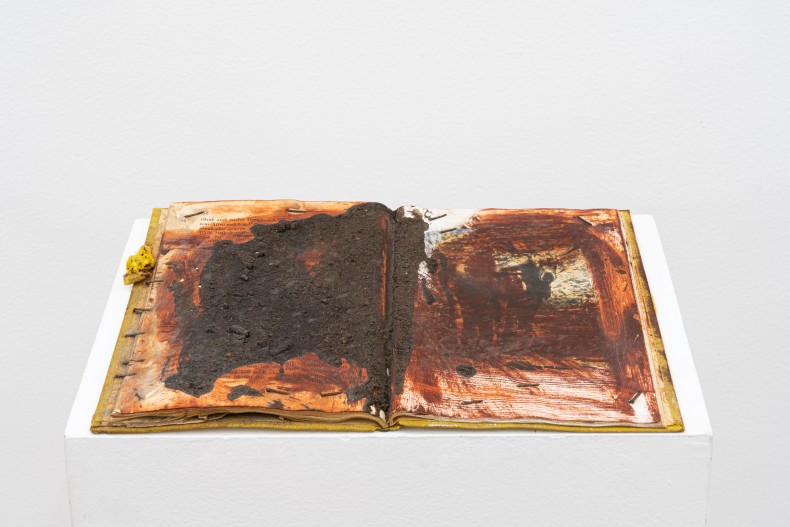Antonio Dias (1944–2018) was a paramount figure in Brazilian late-modernism known for his daring political-pop works made during the 1960s and, most notably, for his approach to conceptual painting and installation during the late 1960s and 1970s. Around 1983 he produced a series of landmark paintings/collages/assemblages where he fused his signature conceptual shape (rectangles with a missing square on the edge) with newspaper cuttings and a new textural, painterly faktura.
These works embodied Dias’ own and singular ‘return to painting’ at a moment when a postmodern return to figuration was flourishing globally. Dias accompanied ‘painting’s cyclical return’ by fusing his long-lasting interest in the bodily quality of art with his overarching investigation around art’s concept and politics.
Dias’ practice strikingly resonates with Karin Lambrecht’s (1957) production from the late 1980s and early 1990s. In Brazil’s Rio Grande do Sul, Lambrecht was grounding her most accomplished core of work by approaching painting as a support for language and abstraction, following an array of references: from Mira Schendel’s painterly legacy to radical Actionism, Lambrecht echoes Dias as her contemporary while proposing painting as a philosophical inquiry on the fragility of human existence.
Dias’ politics of painting thus encountered Lambrecht’s metaphysics of painting while both artists were proposing a distinctive approach to art that departs from the superficial painterly trends, à la mode during the 1980s.

